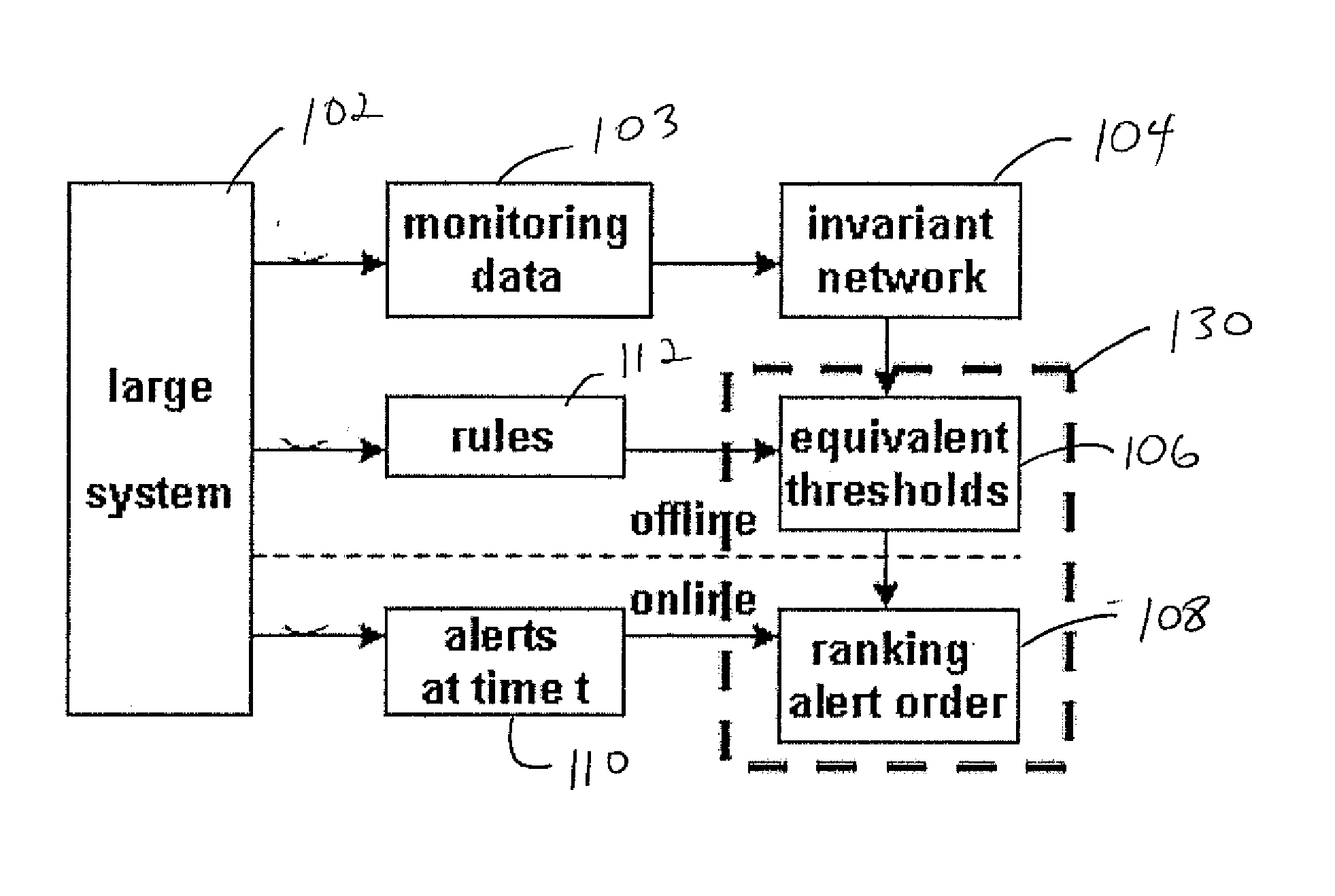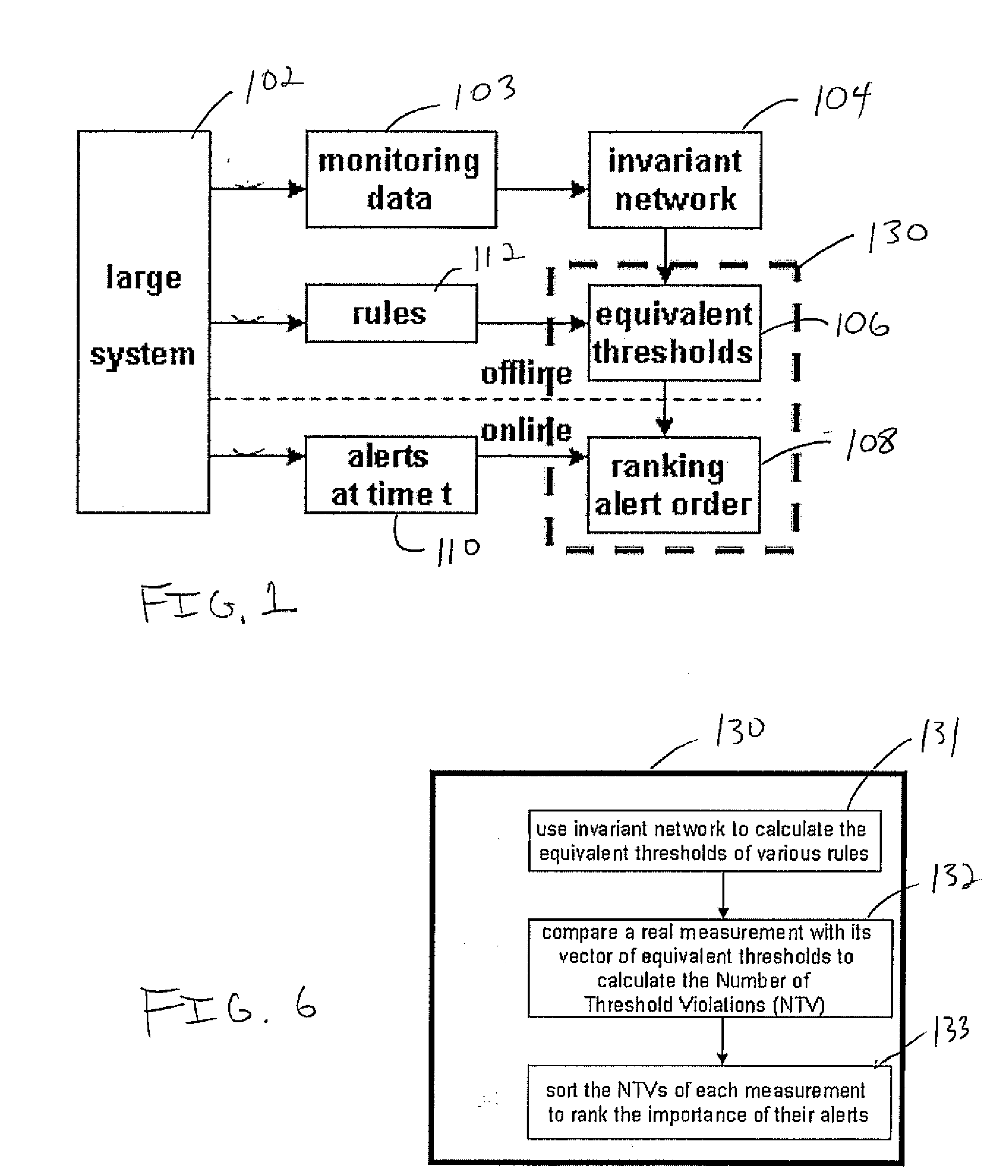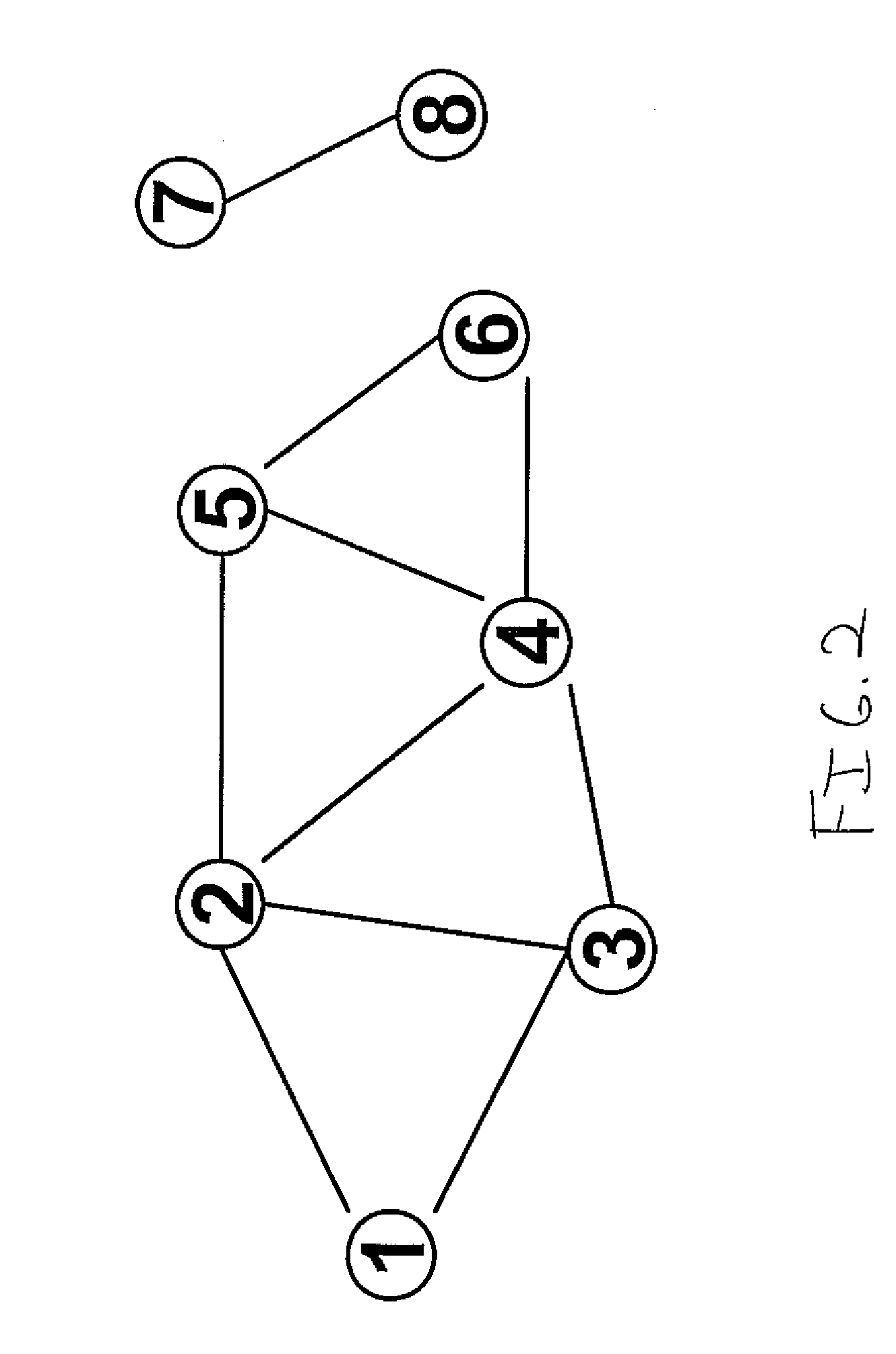Ranking the importance of alerts for problem determination in large systems
a technology for problem determination and computing systems, applied in frequency-division multiplexes, instruments, data switching networks, etc., can solve problems such as inability to scale up and practicality for large systems with huge complexity, and the difficulty of identifying the importance of alerts from various rules
- Summary
- Abstract
- Description
- Claims
- Application Information
AI Technical Summary
Benefits of technology
Problems solved by technology
Method used
Image
Examples
Embodiment Construction
[0020]A peer review mechanism and method are provided to rank the importance of alerts where the top ranked alerts are more likely to be true positives. After comparing a metric value against its threshold to generate alerts, the present principles also compare values with the equivalent thresholds from many other rules to determine the importance of alerts. The present approach has been evaluated and demonstrated its effectiveness.
[0021]The present embodiments include a peer review mechanism where a measurement is not only compared to a local threshold but also the equivalent thresholds mapped from other rules to determine the importance of its alerts. The top ranked alerts are more important because they get consensus from other rules and are more likely to be true positives. Operators can use the top ranked alerts as trustworthy evidence to prioritize their problem determination process to prevent being misled by many false alerts.
[0022]An invariant technology is able to discover...
PUM
 Login to View More
Login to View More Abstract
Description
Claims
Application Information
 Login to View More
Login to View More - R&D
- Intellectual Property
- Life Sciences
- Materials
- Tech Scout
- Unparalleled Data Quality
- Higher Quality Content
- 60% Fewer Hallucinations
Browse by: Latest US Patents, China's latest patents, Technical Efficacy Thesaurus, Application Domain, Technology Topic, Popular Technical Reports.
© 2025 PatSnap. All rights reserved.Legal|Privacy policy|Modern Slavery Act Transparency Statement|Sitemap|About US| Contact US: help@patsnap.com



